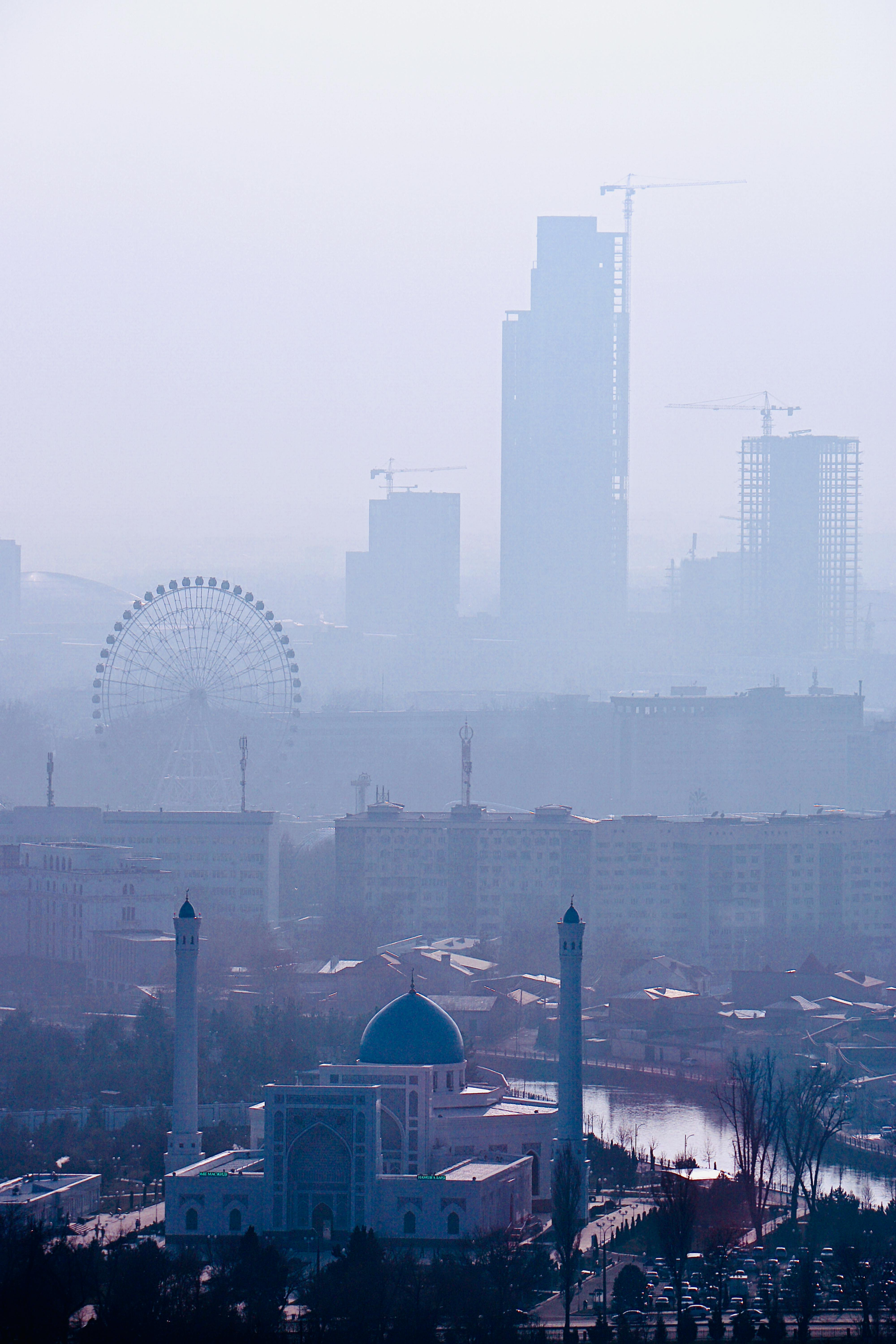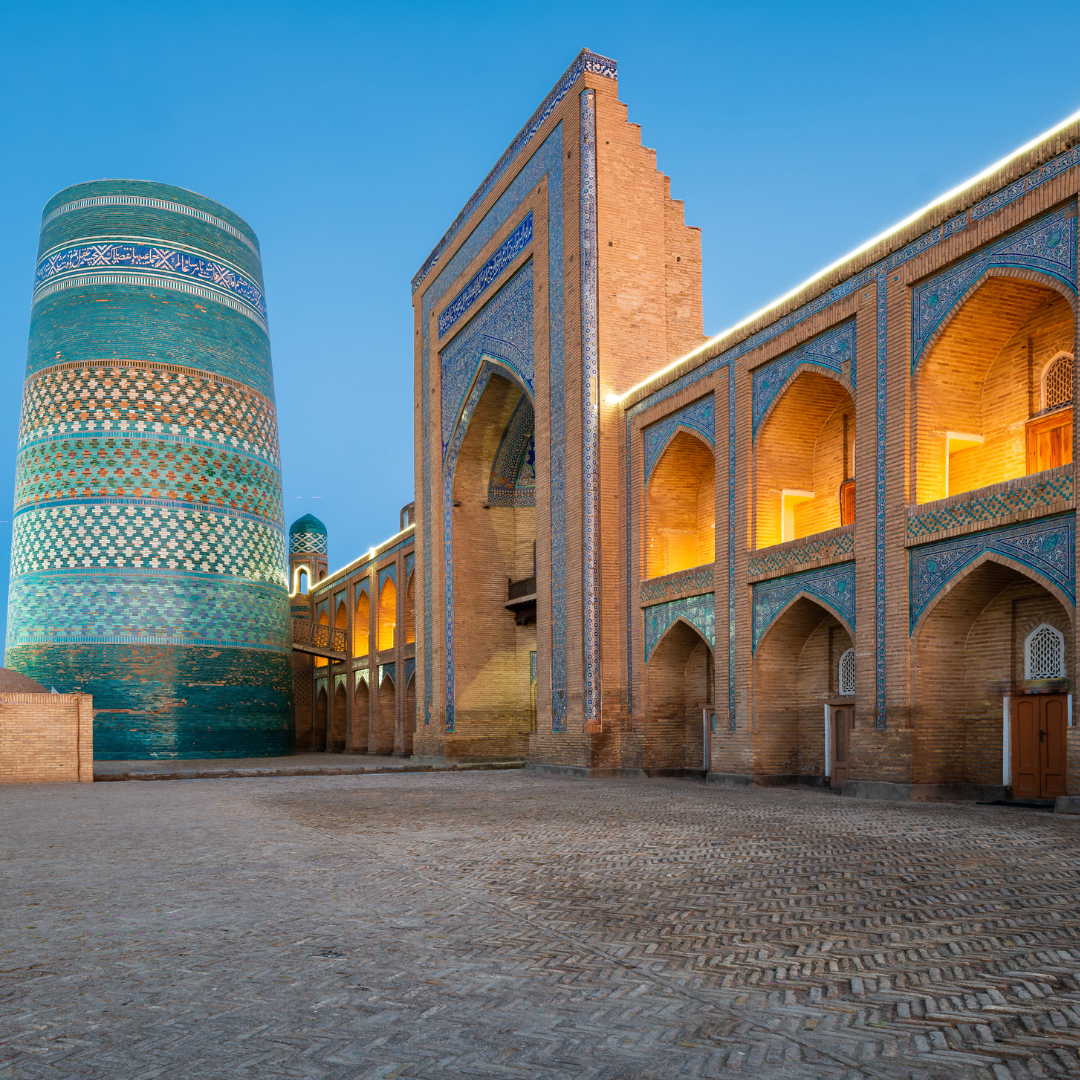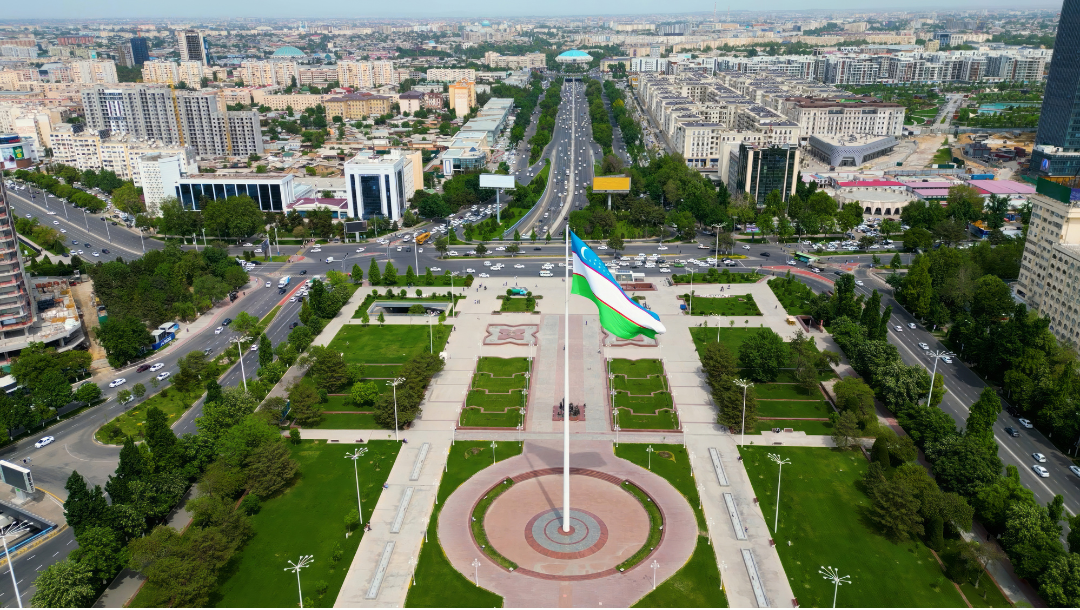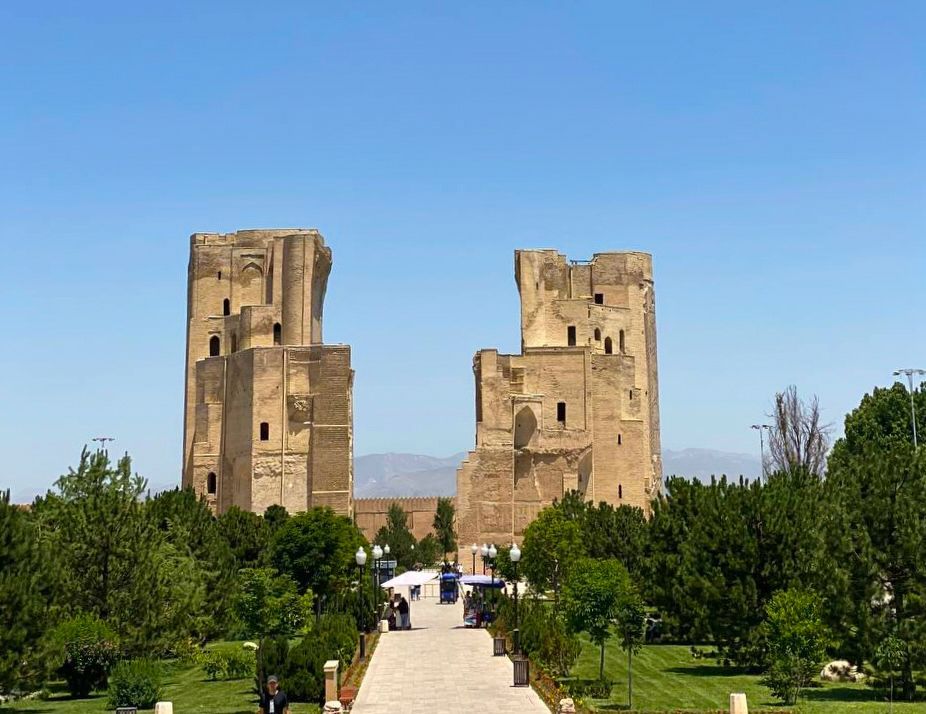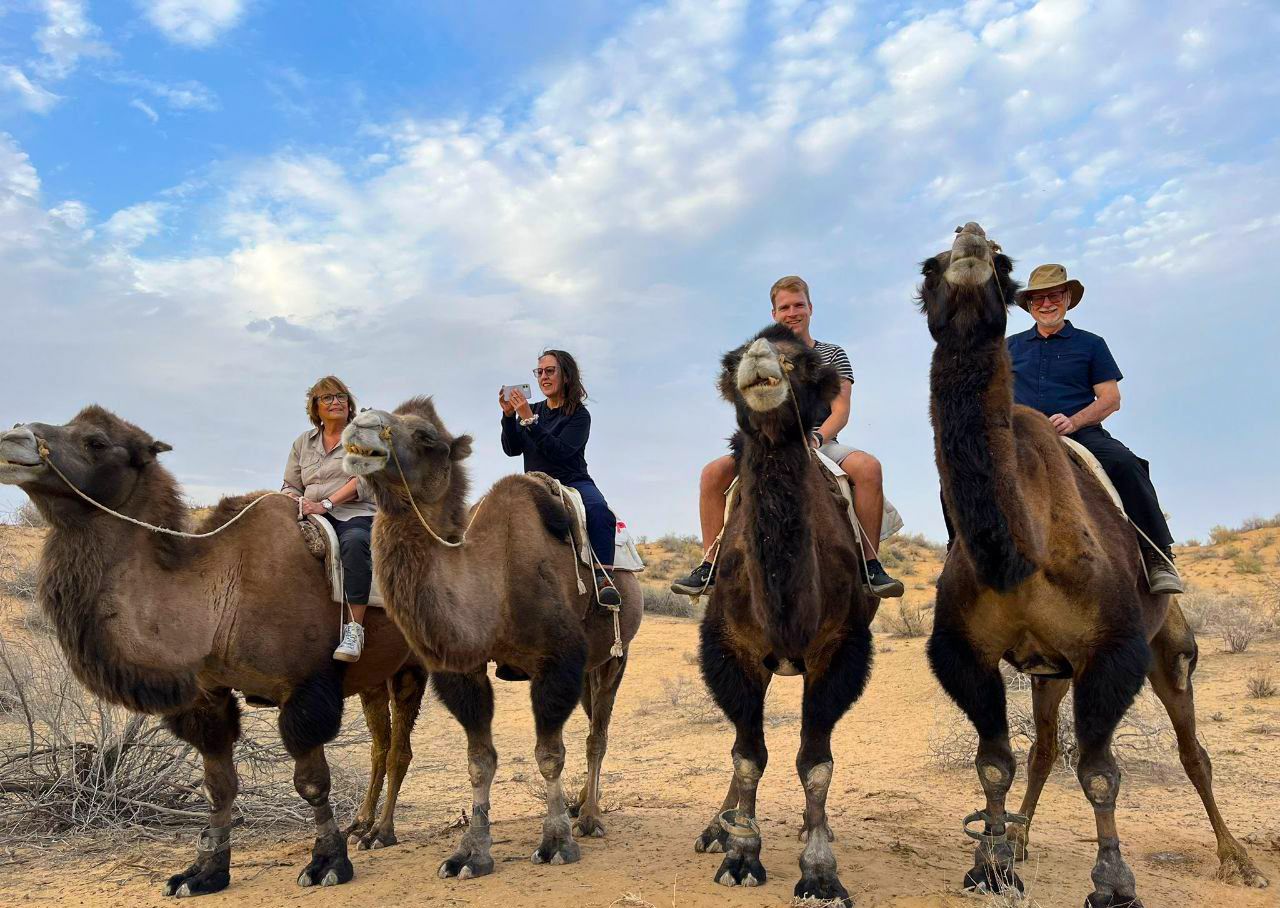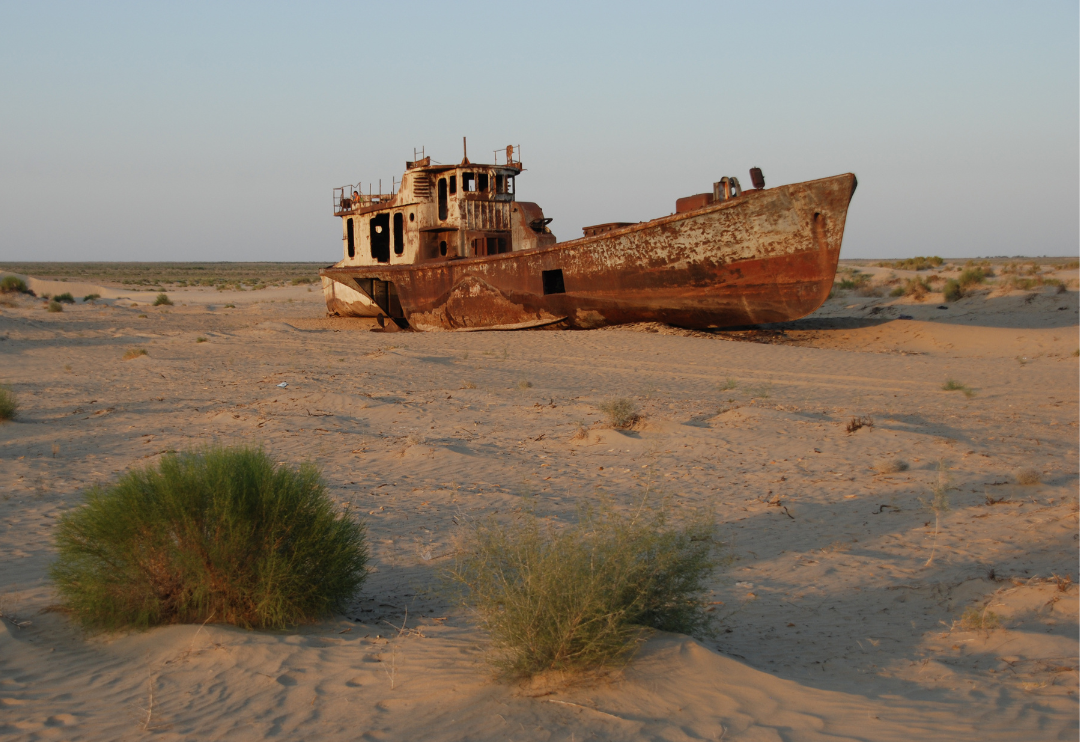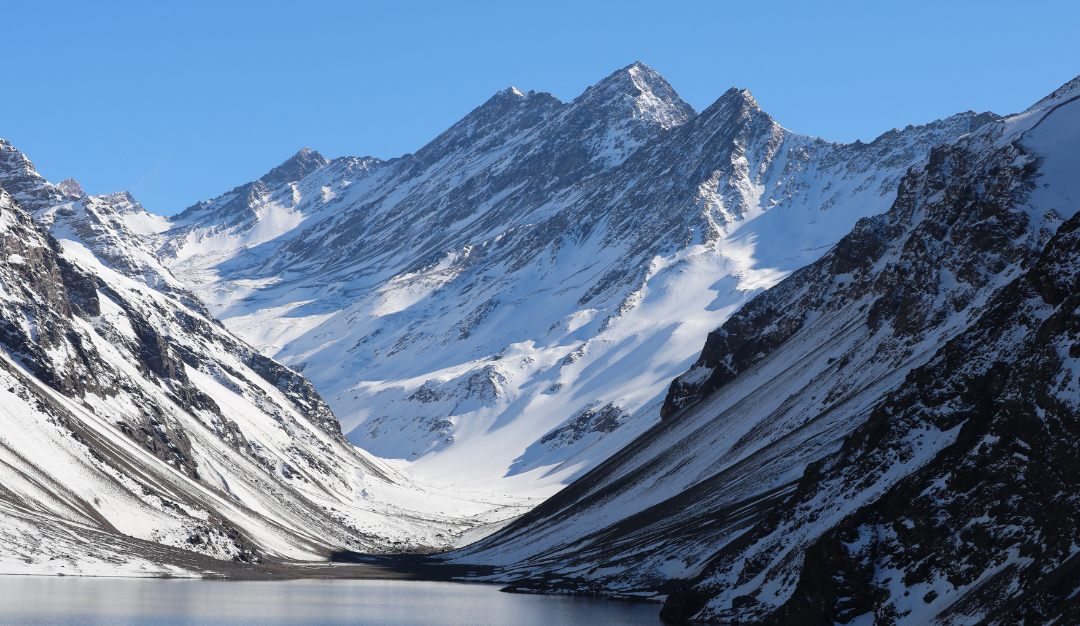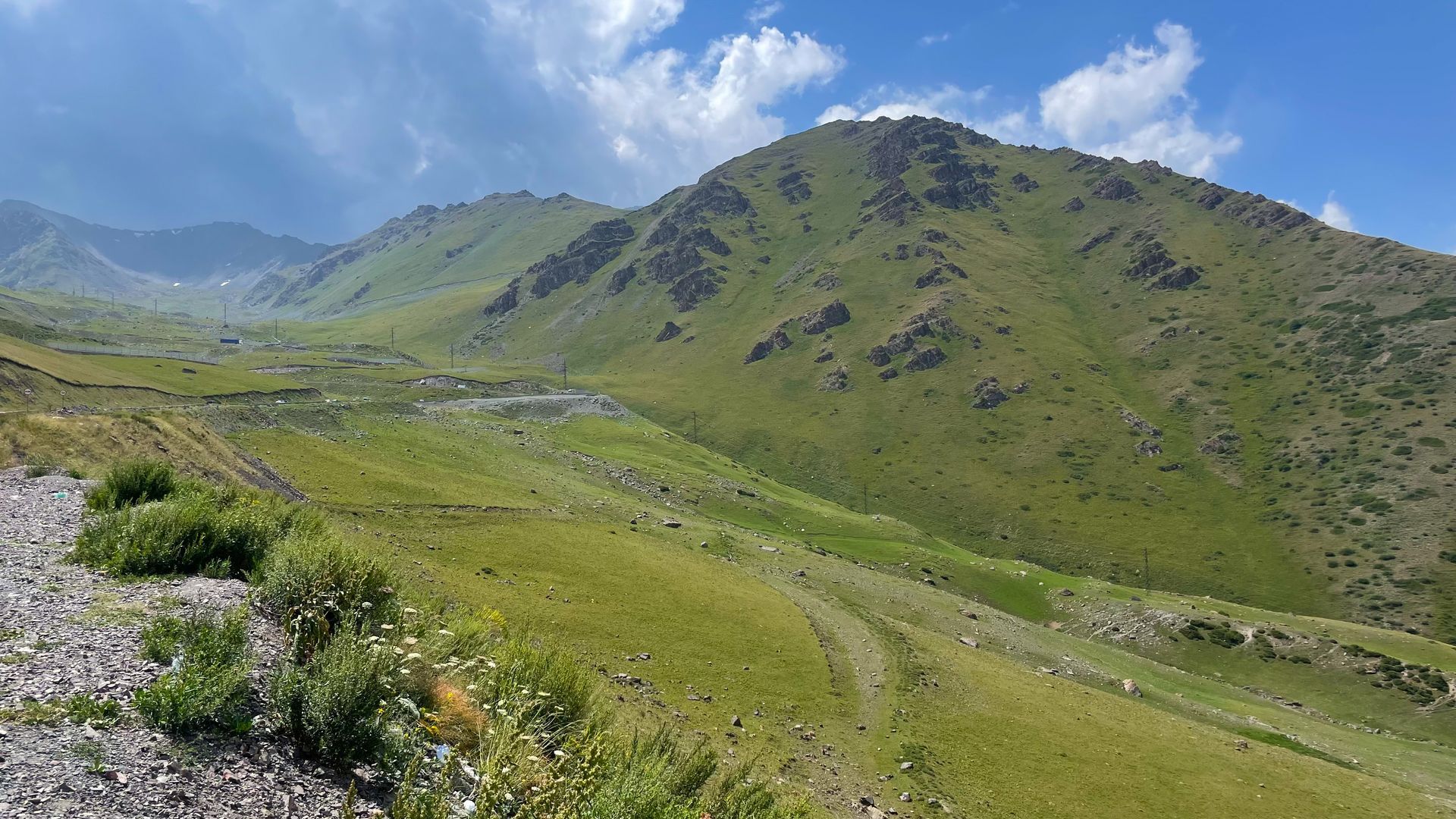WHY UZBEKISTAN?
Dear Traveler,
You might not know Uzbekistan as a country you may travel in but you have definitely heard about stunning cities as Bukhara, city of virtual outdoor museums, Samarkand known as the Paradise of the ancient culture, and Khiva, the city where you feel like you are in “1001 nights” fairy tale.
Here, we would like to introduce Uzbekistan, the “Heart of the Silk Road”, due to its geographical location. It’s progressing economy and well-known hospitality become more popular and attractive destination for tourism. If you choose Uzbekistan for your next trip, You’ll explore remarkable historical sites, experience ancient traditions, and enjoy diverse landscapes—from the vast Kyzylkum desert to lush gardens and scenic mountains.
This is the country where you will be welcomed best indeed.
We are looking forward seeing you in Uzbekistan!
Silk Tour Team
WHY UZBEKISTAN?
Dear Traveler,
You might not know Uzbekistan as a country you may travel in but you have definitely heard about stunning cities as Bukhara, city of virtual outdoor museums, Samarkand known as the Paradise of the ancient culture, and Khiva, the city where you feel like you are in “1001 nights” fairy tale.
Here, we would like to introduce Uzbekistan, the “Heart of the Silk Road”, due to its geographical location. It’s progressing economy and well-known hospitality become more popular and attractive destination for tourism. If you choose Uzbekistan for your next trip, you will discover not only numerous historical and architectural monuments, but also ancient culture, colorful fine arts, old customs and traditions, fascinating landscapes from the sand dunes of Kyzylkum desert to the blooming gardens, from the plains to the beautiful mountains, where you can enjoy the fresh cool air even during the hot and dry Uzbek summers. You will also have a chance to taste the most delicious meals of Uzbek cuisine and even try to cook it yourself.
This is the country where you will be welcomed best indeed.
We are looking forward seeing you in Uzbekistan!
Silk Tour Team
WHY UZBEKISTAN?
Dear Traveler,
You might not know Uzbekistan as a country you may travel in but you have definitely heard about stunning cities as Bukhara, city of virtual outdoor museums, Samarkand known as the Paradise of the ancient culture, and Khiva, the city where you feel like you are in “1001 nights” fairy tale.
Here, we would like to introduce Uzbekistan, the “Heart of the Silk Road”, due to its geographical location. It’s progressing economy and well-known hospitality become more popular and attractive destination for tourism. If you choose Uzbekistan for your next trip, you will discover not only numerous historical and architectural monuments, but also ancient culture, colorful fine arts, old customs and traditions, fascinating landscapes from the sand dunes of Kyzyl-Kum Desert to the blooming gardens, from the hungry steps to the beautiful mountains, where you can enjoy the fresh cool air even during the hot and dry Uzbek summers. You will also have a chance to taste the most delicious meals of Uzbek cuisine and even try to cook it yourself.
This is the country where you will be welcomed best indeed.
We are looking forward seeing you in Uzbekistan!
Sogda Tour Team
A COUNTRY OF:

Rich History
and Culture

Stunning Architecture
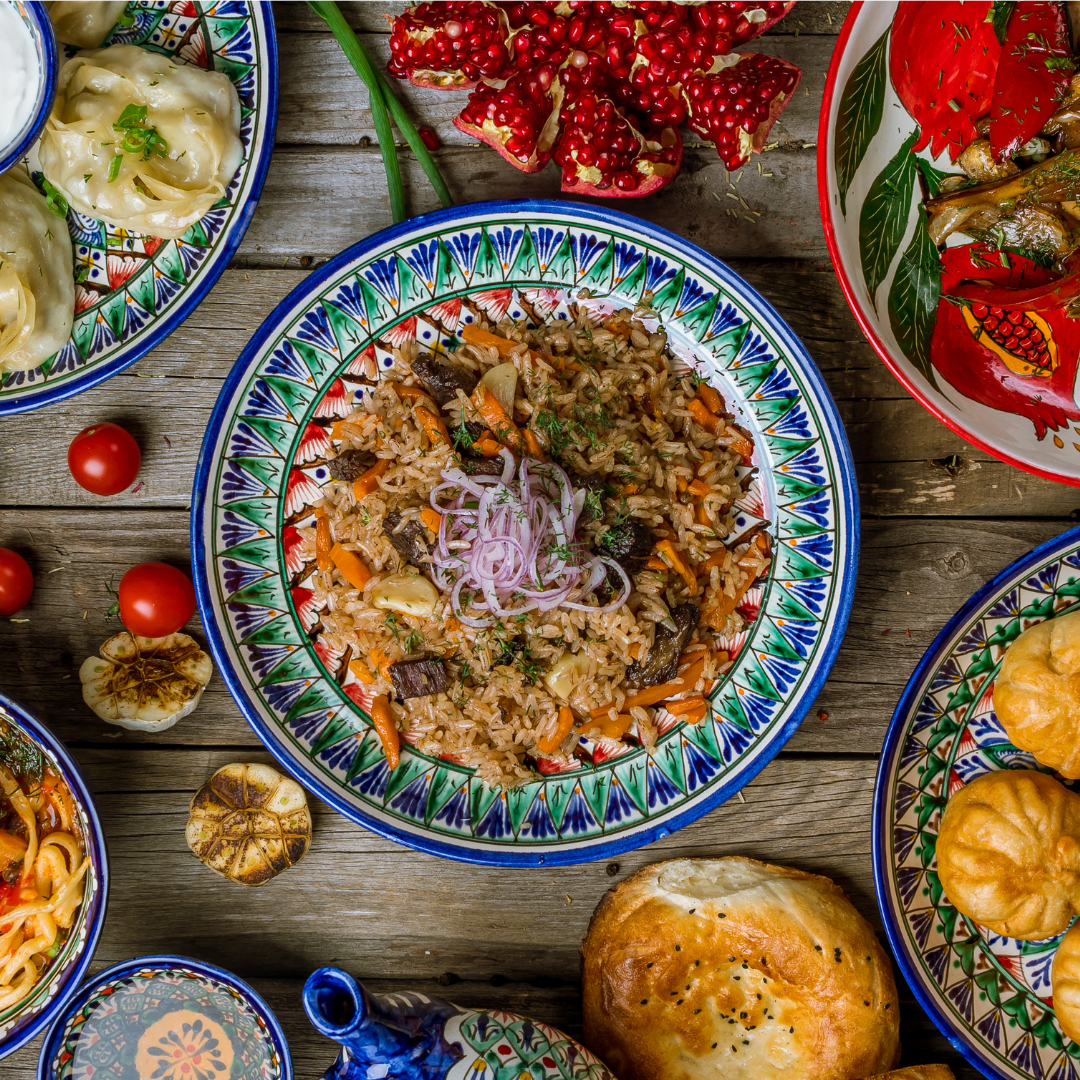
Culinary Delights
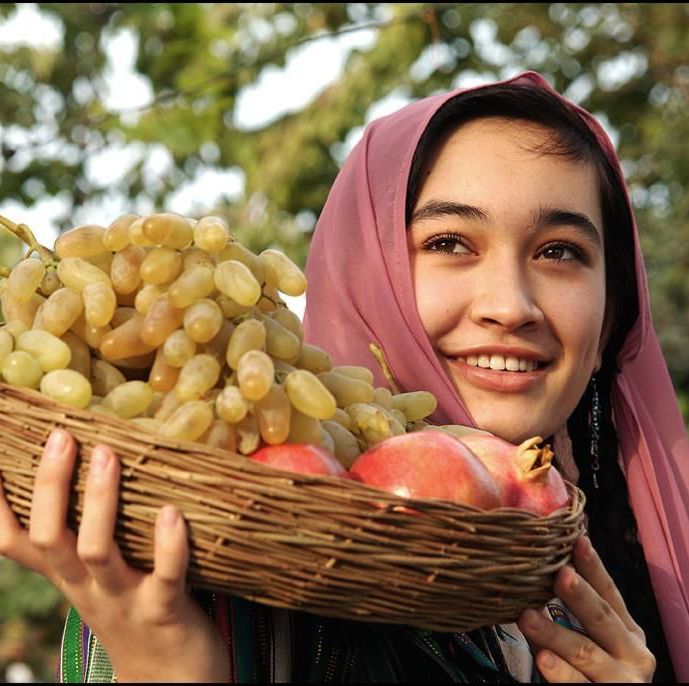
Legendary Hospitality
MAIN CITIES
UZBEKISTAN - A COUNTRY OF
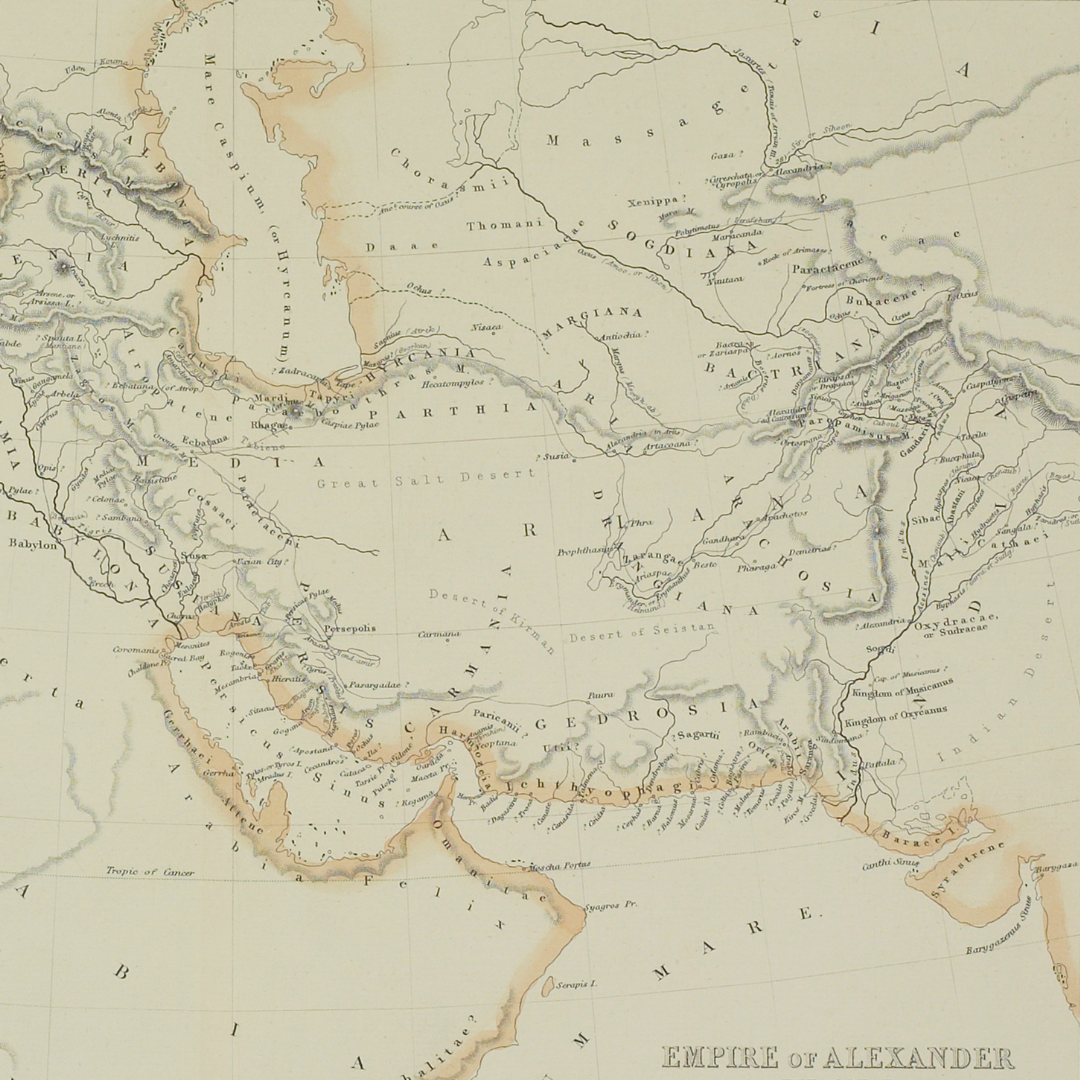
Crossroads of Empires and Cultures
Uzbekistan’s history stretches back over 2,500 years, beginning with the early civilizations that flourished in the region long before the rise of empires.
Serving as the heart of the Great Silk Road, Uzbekistan connected Europe, the Middle East, and Asia, making it a true crossroads of civilizations. Over the centuries, the region was shaped by a series of powerful empires, including the Persians, Alexander the Great’s empire, and later, the Sassanids, Samanid and Timurid dynasties.
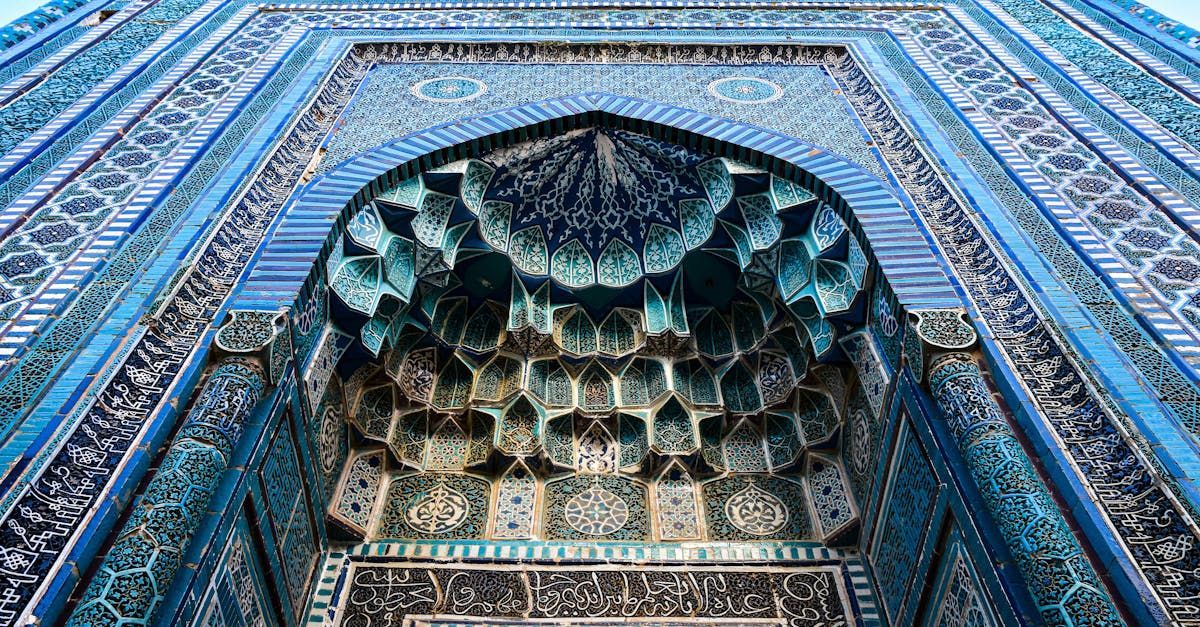
Uzbek Masterpieces
Uzbekistan boasts some of the most breathtaking architecture in the world. The dazzling blue domes, intricate tile work, and towering minarets of Samarkand, Bukhara, and Khiva are a testament to the skill and artistry of the region’s craftsmen.
From the majestic Registan Square to the ornate mausoleums and mosques, the architecture reflects a blend of Persian, Islamic, and Central Asian influences. The grandeur of ancient madrasahs, with their intricate mosaics and calligraphy, transports you to a world of medieval splendor.
A visit to Uzbekistan is a feast for the eyes and soul, revealing the splendor of its past.
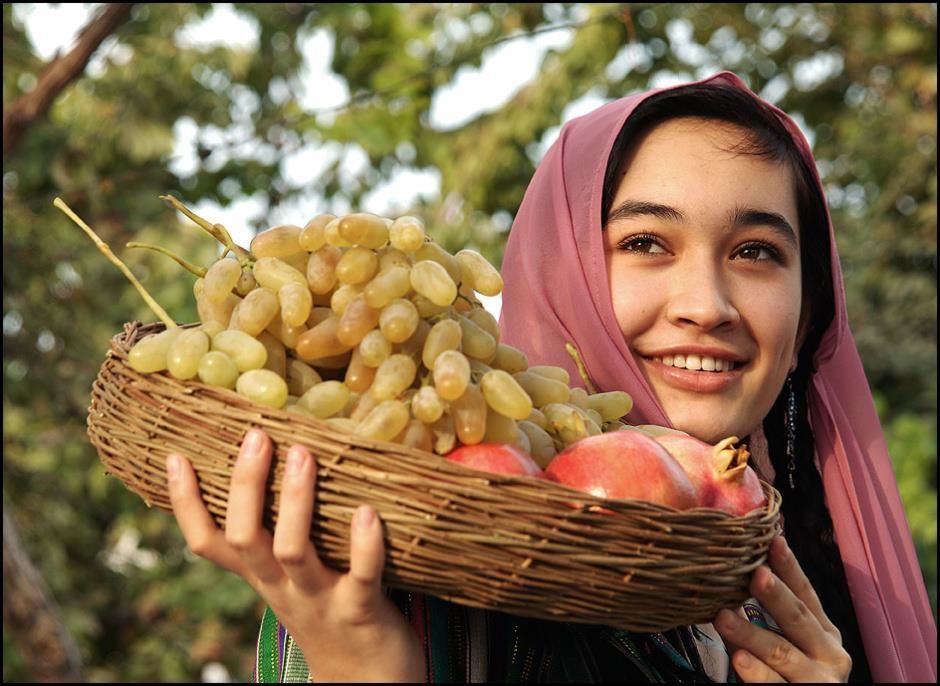
Warm Welcomes and Timeless Traditions
Uzbekistan is renowned for its warm and generous hospitality, a tradition deeply rooted in the culture.
Guests are treated as family, and it is not uncommon for locals to invite travelers into their homes for a meal or to share stories. In every corner of the country, from the bustling streets of Tashkent to the remote villages of the desert, visitors are greeted with open arms and genuine warmth.
This welcoming spirit makes traveling through Uzbekistan a truly enriching experience, where the people you meet can be as memorable as the sights you see.

Delicious Cuisine
Uzbekistan’s cuisine is a delightful blend of flavors influenced by its history along the Silk Road.
The country's signature dish, plov, is a savory rice dish made with lamb, carrots, and spices. Other popular dishes include shashlik (grilled meat skewers), somsa (savory pastries), and lagman (hand-pulled noodle soup).
Uzbek food is hearty, flavorful, and often enjoyed with freshly baked bread and green tea. Markets are filled with vibrant spices, dried fruits, and sweets that reflect the region's rich culinary heritage. Dining in Uzbekistan is not just about the food, it's an experience that brings people together in celebration of life’s simple pleasures.
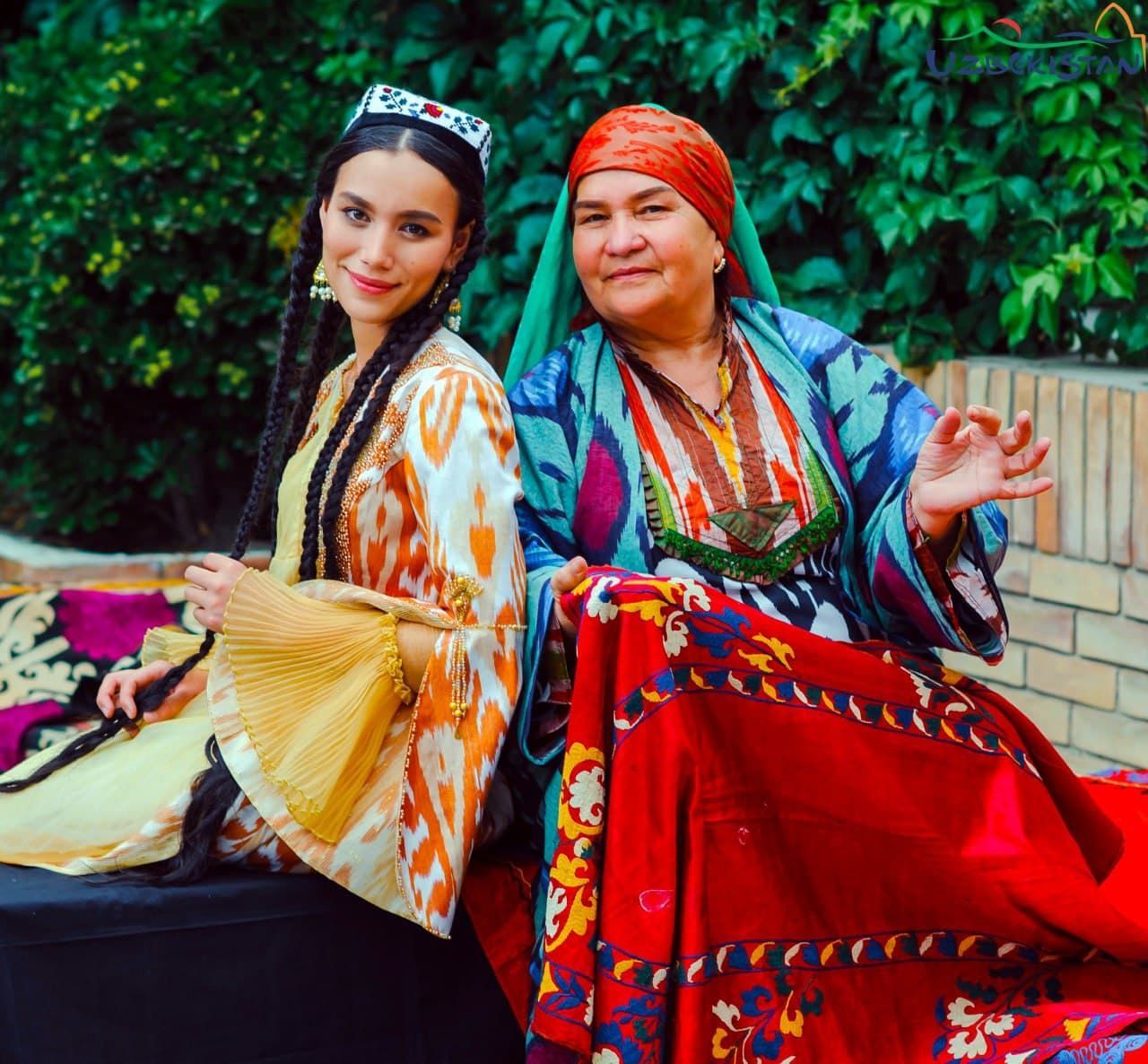
Echoes of Ancient Practices
Uzbekistan is a land where ancient traditions are still very much alive. From the art of silk weaving and carpet making to the intricate craftsmanship of ceramics and jewelry, these age-old skills are passed down through generations. Festivals and cultural events celebrate everything from music and dance to the traditions of hospitality. Visitors can witness traditional tea ceremonies, folk performances, and handicrafts being made by local artisans in vibrant bazaars.
All these enduring practices offer a glimpse into the rich cultural heritage that shapes the country’s identity.
UZBEKISTAN - A COUNTRY OF:

Crossroads of Empires and Cultures
Uzbekistan’s history stretches back over 2,500 years, beginning with the early civilizations that flourished in the region long before the rise of empires.
Serving as the heart of the Great Silk Road, Uzbekistan connected Europe, the Middle East, and Asia, making it a true crossroads of civilizations. Over the centuries, the region was shaped by a series of powerful empires, including the Persians, Alexander the Great’s empire, and later, the Sassanids, Samanid and Timurid dynasties.
This deep history can be seen in Uzbekistan's stunning madrassas, mosques, and mausoleums, which continue to tell the stories of these ancient empires.
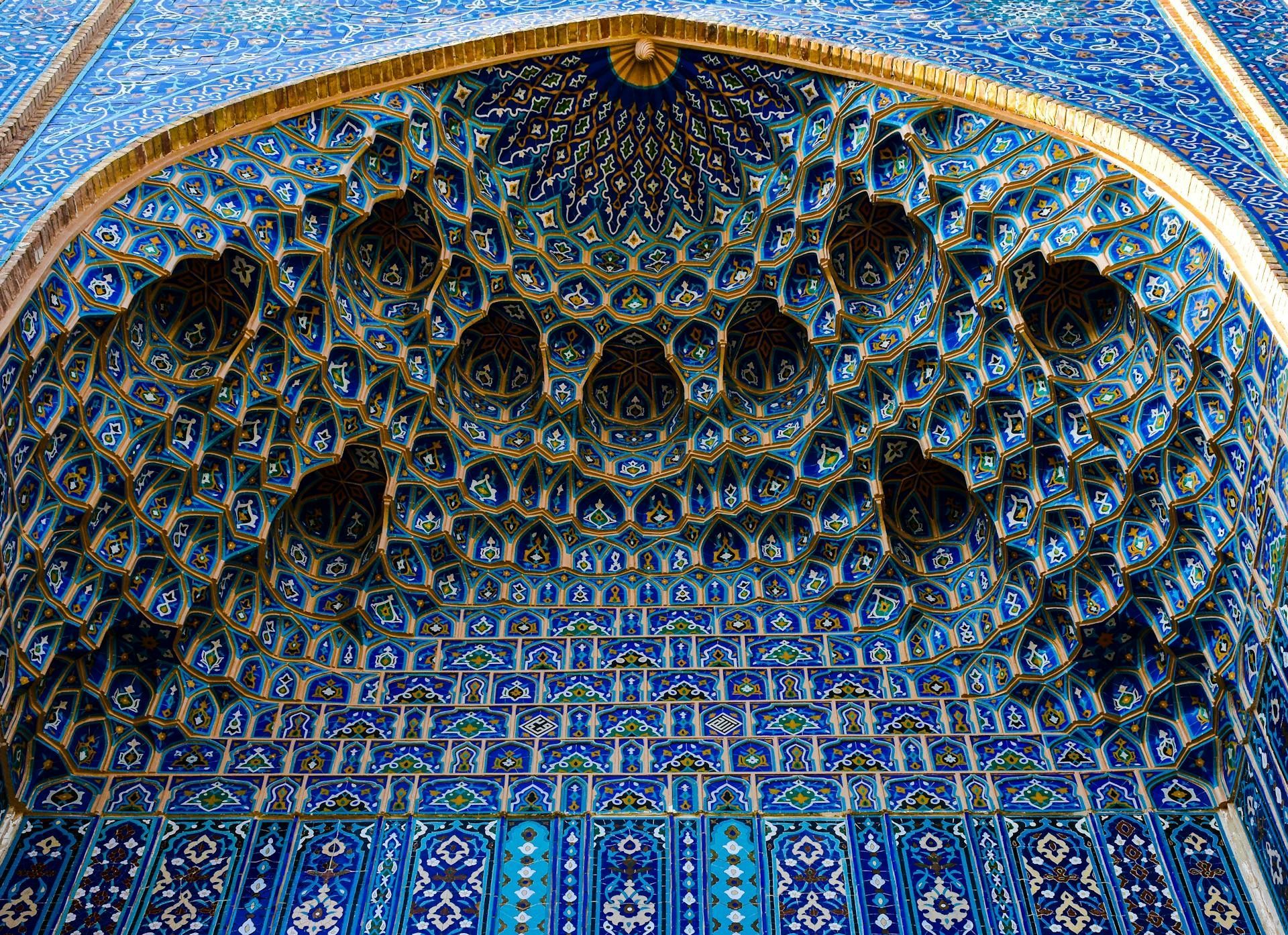
Uzbek Masterpieces
Uzbekistan boasts some of the most breathtaking architecture in the world. The dazzling blue domes, intricate tile work, and towering minarets of Samarkand, Bukhara, and Khiva are a testament to the skill and artistry of the region’s craftsmen.
From the majestic Registan Square to the ornate mausoleums and mosques, the architecture reflects a blend of Persian, Islamic, and Central Asian influences. The grandeur of ancient madrasahs, with their intricate mosaics and calligraphy, transports you to a world of medieval splendor. These masterpieces not only showcase the beauty of Islamic art but also stand as symbols of the country’s spiritual and cultural heritage.
A visit to Uzbekistan is a feast for the eyes and soul, revealing the splendor of its past.

Warm Welcomes and Timeless Traditions
Uzbekistan is renowned for its warm and generous hospitality, a tradition deeply rooted in the culture.
Guests are treated as family, and it is not uncommon for locals to invite travelers into their homes for a meal or to share stories. In every corner of the country, from the bustling streets of Tashkent to the remote villages of the desert, visitors are greeted with open arms and genuine warmth. Whether enjoying a cup of tea with a local family or staying in a traditional guesthouse, you’ll feel the heart of Uzbekistan’s hospitality.
This welcoming spirit makes traveling through Uzbekistan a truly enriching experience, where the people you meet can be as memorable as the sights you see.

Delicious Cuisine
Uzbekistan’s cuisine is a delightful blend of flavors influenced by its history along the Silk Road.
The country's signature dish, plov, is a savory rice dish made with lamb, carrots, and spices. Other popular dishes include shashlik (grilled meat skewers), somsa (savory pastries), and lagman (hand-pulled noodle soup).
Uzbek food is hearty, flavorful, and often enjoyed with freshly baked bread and green tea. Markets are filled with vibrant spices, dried fruits, and sweets that reflect the region's rich culinary heritage. Dining in Uzbekistan is not just about the food, it's an experience that brings people together in celebration of life’s simple pleasures.

Echoes of Ancient Practices
Uzbekistan is a land where ancient traditions are still very much alive. From the art of silk weaving and carpet making to the intricate craftsmanship of ceramics and jewelry, these age-old skills are passed down through generations. Festivals and cultural events celebrate everything from music and dance to the traditions of hospitality. Visitors can witness traditional tea ceremonies, folk performances, and handicrafts being made by local artisans in vibrant bazaars.
In rural areas, life moves at a slower pace, where centuries-old customs, such as farming techniques and traditional dress, remain a part of everyday life. Uzbekistan’s deep respect for its heritage ensures that its traditions continue to thrive in modern times.
All these enduring practices offer a glimpse into the rich cultural heritage that shapes the country’s identity.
MAIN CITIES:
MAIN CITIES
MAIN CITIES
TASHKENT
Learn moreSAMARKAND
Describe some quality or feature of the company. Write a short paragraph about it and choose an appropriate icon.
BUKHARA
Describe some quality or feature of the company. Write a short paragraph about it and choose an appropriate icon.
KHIVA
Describe some quality or feature of the company. Write a short paragraph about it and choose an appropriate icon.
TASHKENT
With a population of over 2.3 million, it translates as “Stone City.”
Due to its central location in the region, the city received Sogdian and Turkic influences in its early history, before the Arabs arrived in the 8th century. After its destruction by Genghis Khan in 1219, the city was rebuilt and benefited from the Silk Road. The city was conquered by the Russian Army in 1865, and during Soviet times, it witnessed major growth and demographic changes. Following the major earthquake of 1966, the old part of
Tashkent retains many of its historical buildings.
SAMARKAND
One of the oldest continuously inhabited cities in Central Asia, Samarkand is older than its recorded history. From being the center of the Sogdian Civilization to the birthplace of the Timurid Renaissance, this city has seen empires rise and fall.Its fame reaches back into the fog of time.
In 329 BC, Alexander the Great exclaimed, “Everything I have heard about Samarkand is true, except that it’s more beautiful than I ever imagined!”
In 2001, UNESCO added the city to its World Heritage List as Samarkand – Crossroads of Cultures.
BUKHARA
One of the most sacred places in Islam, the admired and charming city of Bukhara was also one of the key stops along the Silk Road.
In the Middle Ages, Bukhara was a major center of Islamic theology and culture. To this day, there are hundreds of well-preserved buildings (mosques, madrasahs, bazaars, and caravanserais) erected during the period from the 9th to the 17th centuries.
The historic center of Bukhara has been listed by UNESCO as one of the World Heritage Sites.
KHIVA
Khiva is a well-preserved and fascinating city, its azure-glazed tiles glinting in the midday sun.
The first thing you feel as you enter the heart of Khiva, the town of Ichan-Kala, is that you are in a fairy tale. As if descended from the magical pages of Shaherizade's fairy tales, Khiva will meet you with narrow, cobbled streets, two-story clay houses, and a stunning array of mosques, mausoleums, minarets and bright, richly colored domes. Surrounded by the Kyzyl-Kum Desert, this city was one of the most important resting places on the route of the Silk Road caravans.
Itchan Kala in Khiva was the first site in Uzbekistan to be inscribed on the World Heritage List of UNESCO in 1991.
Tashkent
"The stone city" - is the capital. Due to its central location in the region, the city received Sogdian and Turkic influences in its early history, before the Arabs arrived in the 8th century. After its destruction by Genghis Khan in 1219, the city was rebuilt and benefited from the Silk Road.
The city was conquered by the Russian Army in 1865, and during Soviet times, it witnessed major growth and demographic changes. Following the major earthquake of 1966, the old part of Tashkent retains many of its historical buildings.
Samarkand
One of the oldest continuously inhabited cities in Central Asia, Samarkand is older than its recorded history. From being the center of the Sogdian Civilization to the birthplace of the Timurid Renaissance, this city has seen empires rise and fall.Its fame reaches back into the fog of time.
In 329 BC, Alexander the Great exclaimed, “Everything I have heard about Samarkand is true, except that it’s more beautiful than I ever imagined!”
In 2001, UNESCO added the city to its World Heritage List as Samarkand – Crossroads of Cultures.
Bukhara
One of the most sacred places in Islam, the admired and charming city of Bukhara was also one of the key stops along the Silk Road.
In the Middle Ages, Bukhara was a major center of Islamic theology and culture. To this day, there are hundreds of well-preserved buildings (mosques, madrasahs, bazaars, and caravanserais) erected during the period from the 9th to the 17th centuries.
The historic center of Bukhara has been listed by UNESCO as one of the World Heritage Sites.
Khiva
Khiva is a well-preserved and fascinating city, its azure-glazed tiles glinting in the midday sun.
The first thing you feel as you enter the heart of Khiva, the town of Ichan-Kala, is that you are in a fairy tale. As if descended from the magical pages of Shaherizade's fairy tales, Khiva will meet you with narrow, cobbled streets, two-story clay houses, and a stunning array of mosques, mausoleums, minarets and bright, richly colored domes. Surrounded by the Kyzyl-Kum Desert, this city was one of the most important resting places on the route of the Silk Road caravans.
Itchan Kala in Khiva was the first site in Uzbekistan to be inscribed on the World Heritage List of UNESCO in 1991.
MAIN CITIES:
OTHER CITIES
OTHER CITIES
Shahrisabz
The city is located 90 km south to Samarkand, was once a major city of the Central Asia as Kesh.
Shakhrisabz was the birthplace of Timur on April 9, 1346, to the family of a minor local chief, and during the early years of the Timurid dynasty, enjoyed its considerable patronage. Timur regarded Shakhrisabz as his home town.
Kokand
The main transportation junction in the Fergana Valley due its ancient status as the crossroads of two main ancient trade routes that led into the valley, Kokand is as old as it is beautiful.
Existing since at least the 10th century, the present city began in the middle of the 18th century as the capital of an Uzbek Kingdom – the Kokand Khanate, which at its height spanned from south-central Kazakhstan to north-western Kyrgyzstan.
Termez
Notable as the site of Alexander the Great’s city “Alexandria on the Oxus”, a center of Early Buddhism, and a site of Muslim pilgrimage, Termez is a hidden gem.
Known for producing Islamic luminaries such as Al-Tirmidhi and possessing the remnants of Hellenistic architecture, it is truly a city
of wonderful contrast and incredible history.
Nukus
Nukus is the capital of the autonomous republic of Karakalpakstan.
This small city would be insignificant if it was not for the location of a world-class museum featuring one of the world’s greatest collection of Russian Avant-Garde art banned by Stalin – The Igor Savitsky Museum, or the Nukus Museum of Art.
NATURE
NATURE
Zaamin
Zaamin, often called the "Switzerland of Uzbekistan," is a stunning mountainous region known for its pristine landscapes and fresh air.
Located in the Jizzakh region, Zaamin National Park offers lush forests, alpine meadows, and diverse wildlife, making it a perfect destination for hiking and nature lovers.
It’s an ideal escape for those seeking tranquility and breathtaking natural beauty.
Darband
It is situated in the south of Uzbekistan among the many undulating canyons of the Boysun Mountain Range. The picturesque village encompasses stunning mountains, crystal clear sacred spring, super friendly local families, the famous Iron Gate and scintillating hiking routes. Once it served as a corridor for caravans moving from Kabul to Bukhara. Darband is a must visit for adventure loving photographers, birdwatchers, biologist, hikers and trekkers alike.
Kyzyl Kum Desert
The Kyzylkum Desert, spans an area of 300,000 square kilometers. Its name translates to "Red Sands." The Kyzylkum is bordered by the Syr Darya to the northeast, the Amu Darya to the southwest, the Nurata Range (part of the Tien Shan and Pamir-Alay mountain ranges) to the east, and the Aral Sea and the Aralkum Desert (formed from the dried-up Aral Sea) to the northwest.
Despite its seemingly barren landscape, in spring, the desert transforms into a vibrant scene, with carpets of poppies, tulips, and blooming shrubs, while numerous animals bring the landscape to life. The surrounding areas also offer a variety of tourist attractions.
Aral Sea
The Aral Sea is one of less than 20 ancient lakes in the world, and is estimated to be more than 5 million years old.
To many, the Aral Sea has become synonymous with environmental catastrophe. In the Soviet Union era massive amounts of water were diverted for irrigation of cotton and the lake began to shrink dramatically. The Aral Sea was the fourth largest lake in the world; it has now lost 90% of its source waters and two thirds of its surface area. Salinity has increased fourfold.
Chimgan
The tourist skiing complex Chimgan is located 85 km away from Tashkent.
The main peak of the entire mountain area - Greater Chimgan (3,309 m - 10,856 ft) - looks like a peak of giant star from which, the rays of slopes, adorned by cliffy peaks disperse in all directions.
The mountain skiing season starts in December and lasts until mid of March. There are hotel complexes and cottages in this ski center.
Fergana Valley
Fergana Valley - the vast fertile valley in Central Asia covers parts of Uzbekistan, Tajikistan and Kyrgyzstan.
The valley was important staging post on the Silk Route trades network. Chinese Xian city was in direct connection with the valley that helped European and Middle Eastern kingdoms receive goods from China.
OTHER CENTRAL ASIAN COUNTRIES:
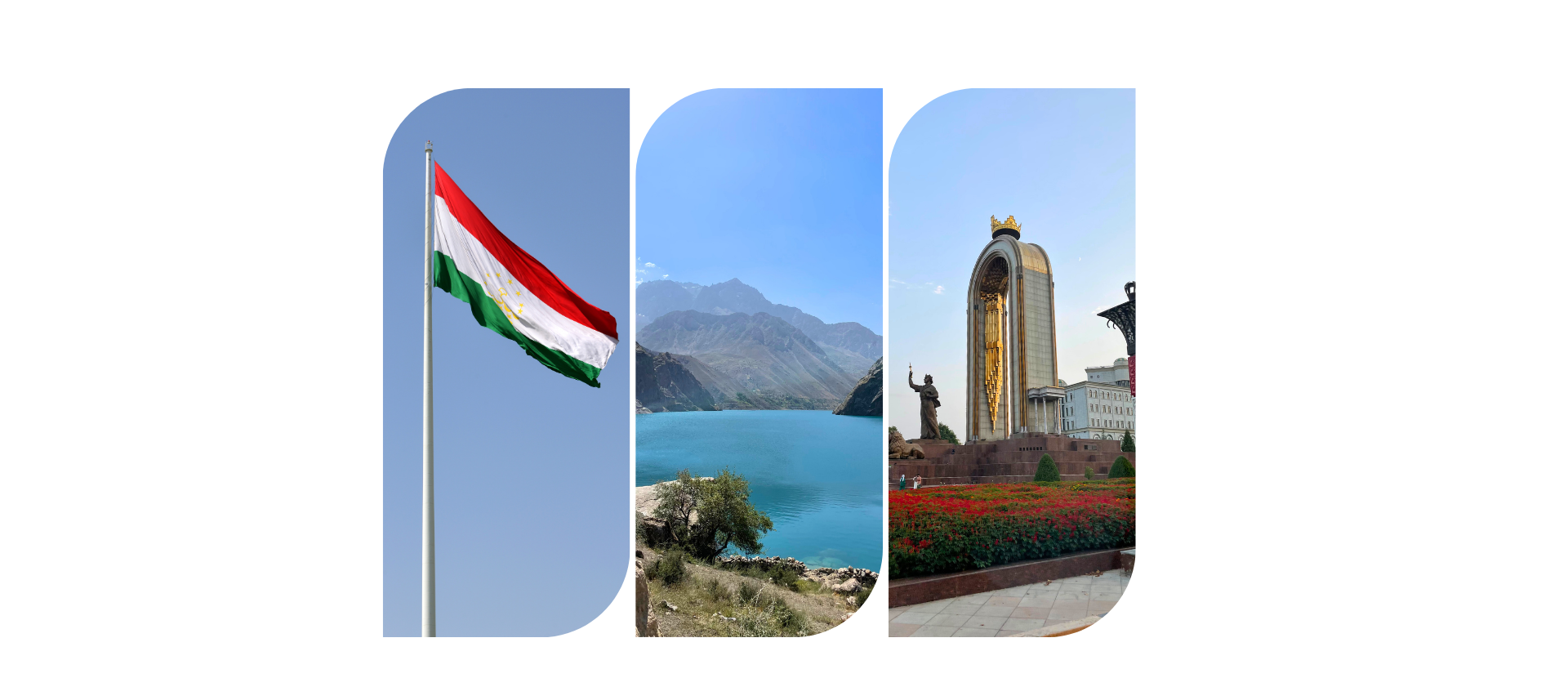
Highlands and Hidden Gems
Tajikistan is a mountainous country known for its rugged terrain and stunning natural beauty. Dushanbe, its capital, is a growing cultural hub with museums, parks, and vibrant markets.
Destinations like Charazm and the Seven Lakes offer picturesque settings perfect for hiking, trekking, and exploration.
Tajikistan’s deep historical roots, combined with its welcoming people, make it an exceptional destination for adventurous travelers.
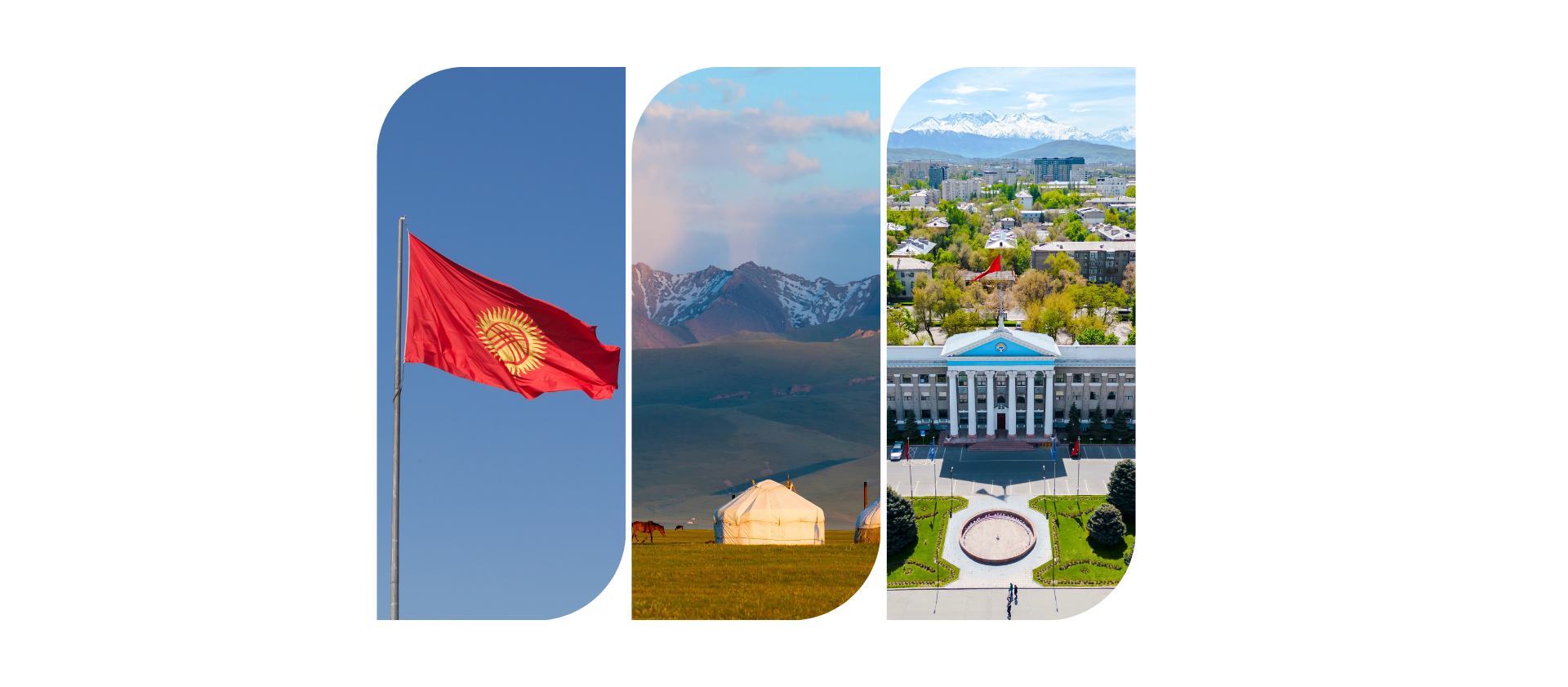
Land of Nomadic Spirit
Kyrgyzstan is known for its dramatic mountain ranges, crystal-clear lakes, and nomadic culture. The capital, Bishkek, provides a mix of Soviet architecture and green spaces, but the true beauty of Kyrgyzstan lies in its countryside.
Lake Issyk-Kul, the second-largest alpine lake in the world, is a major draw, as are the yurt camps scattered across the country’s grasslands, offering an authentic nomadic experience.
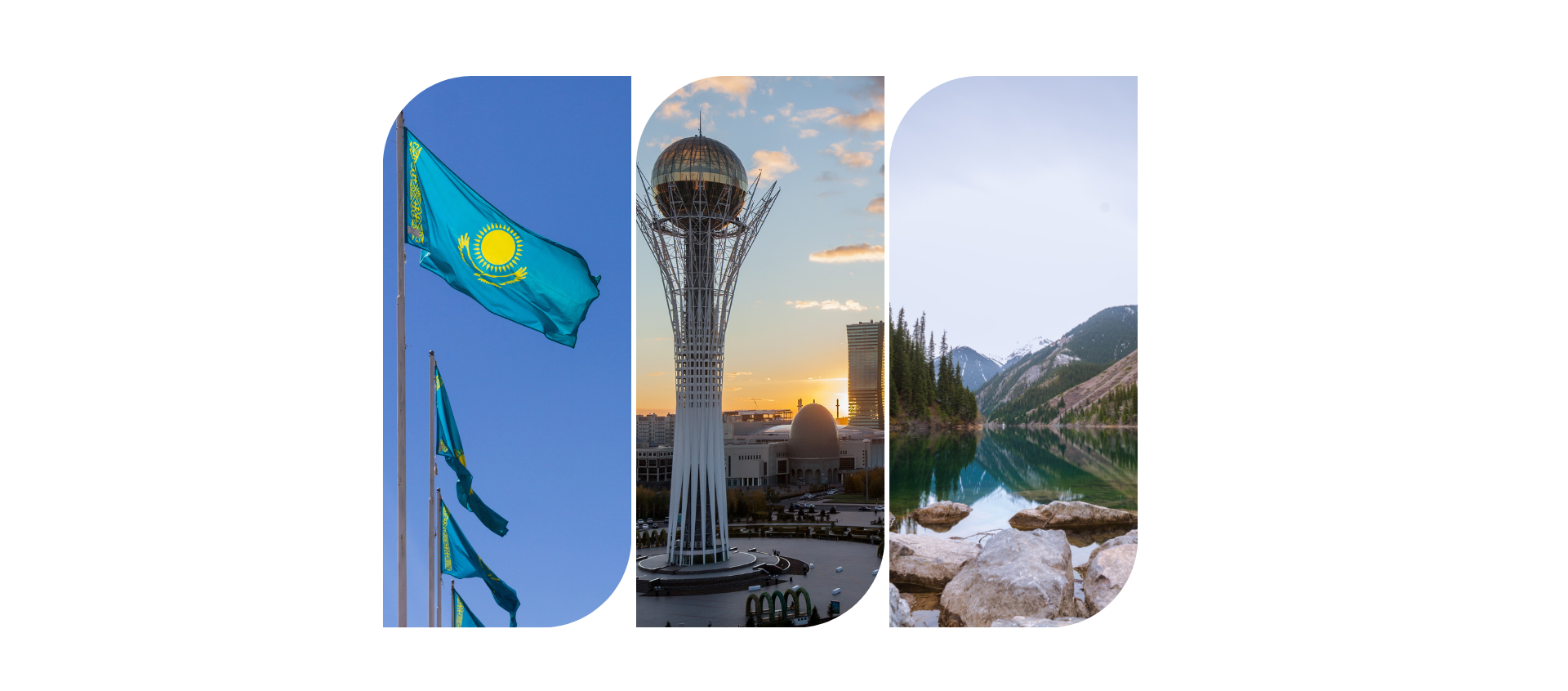
Where Tradition Meets Innovation
Kazakhstan, the largest country in Central Asia, is a land of striking contrasts—from vast steppes to towering mountains.
Kazakhstan is home to beautiful natural wonders like the Charyn Canyon and the scenic landscapes of the Altai Mountains. Its rich history, rooted in nomadic traditions, blends with a dynamic modern culture, making it a fascinating destination for both adventure seekers and cultural explorers.
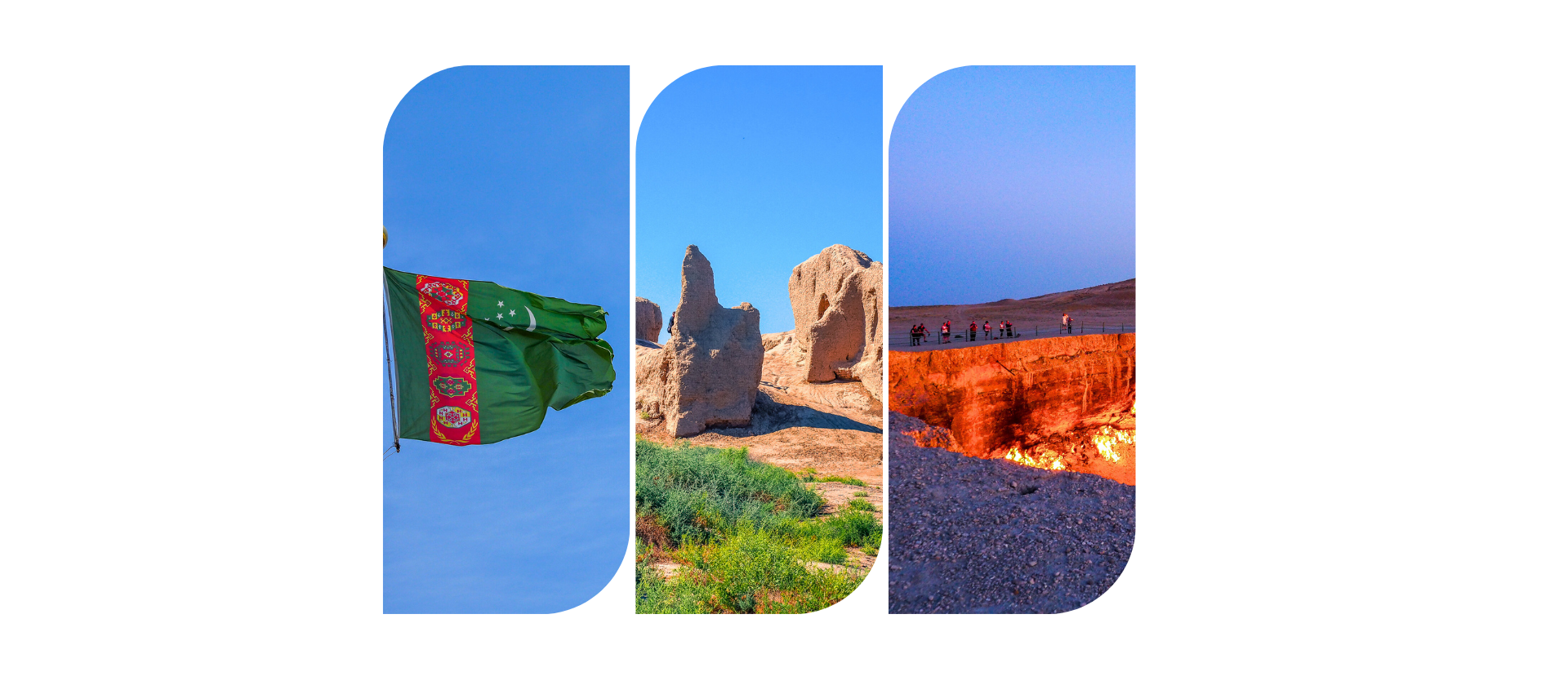
Desert Mysteries and Historical Treasures
Turkmenistan, one of the most enigmatic countries in Central Asia, is famous for its unique landscapes and ancient ruins.
The Karakum Desert and the famous Darvaza Gas Crater, also known as the "Door to Hell," are must-see natural wonders. With its rich culture, ancient history, and otherworldly landscapes, Turkmenistan offers a fascinating journey into one of the most secluded parts of the world.
OTHER CENTRAL ASIAN COUNTRIES
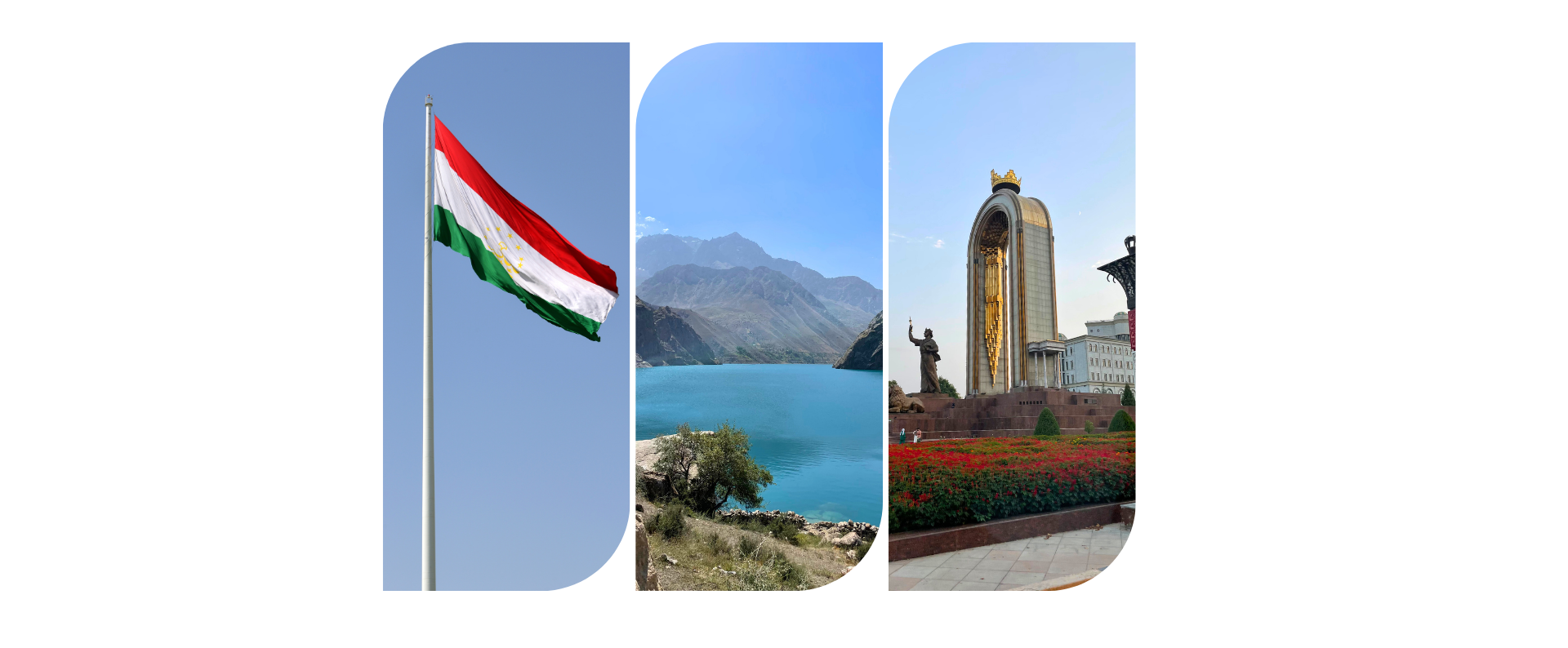
Highlands and Hidden Gems
Tajikistan is a mountainous country known for its rugged terrain and stunning natural beauty. Dushanbe, its capital, is a growing cultural hub with museums, parks, and vibrant markets.
The real allure of Tajikistan, however, lies in its breathtaking landscapes, especially the Pamir Mountains, often called the "Roof of the World." Destinations like Charazm and the Seven Lakes offer picturesque settings perfect for hiking, trekking, and exploration.
Tajikistan’s deep historical roots, combined with its welcoming people, make it an exceptional destination for adventurous travelers.
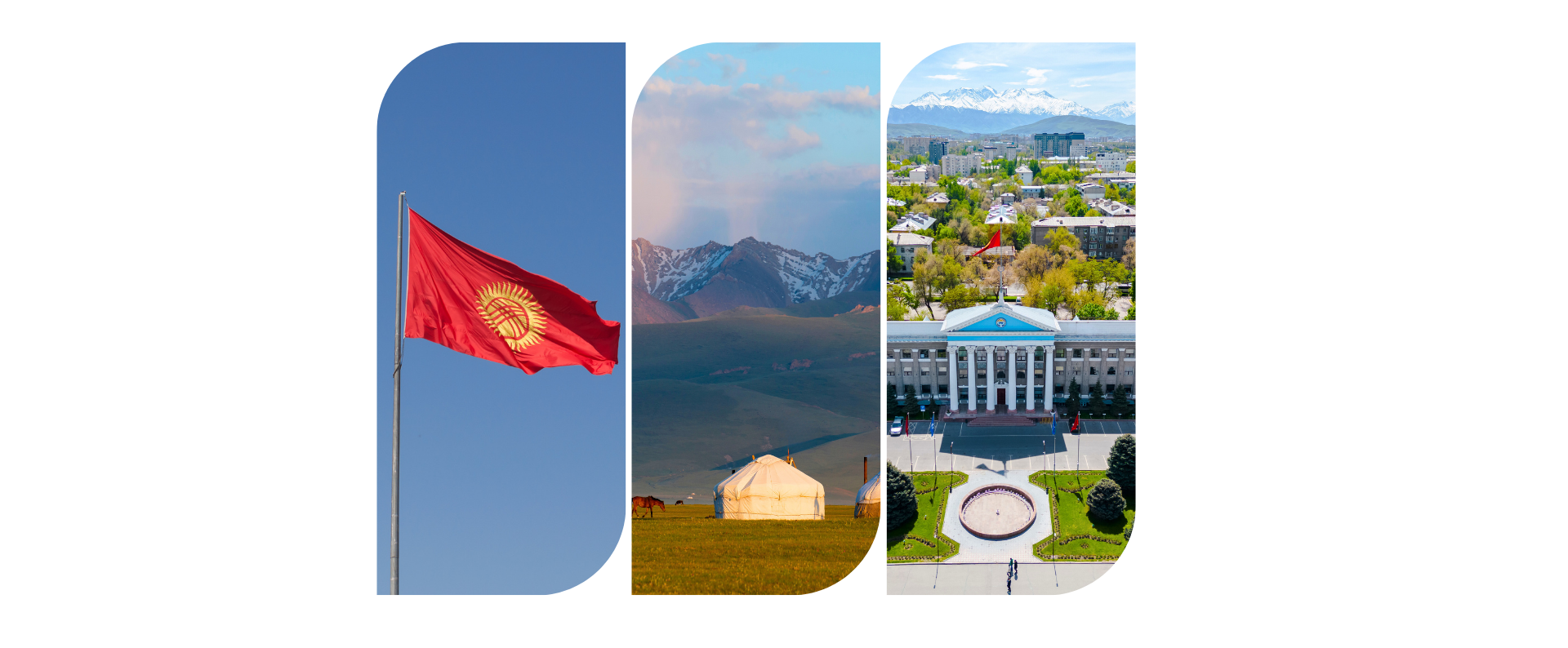
Country of Nomadic Spirit
Kyrgyzstan is known for its dramatic mountain ranges, crystal-clear lakes, and nomadic culture. The capital, Bishkek, provides a mix of Soviet architecture and green spaces, but the true beauty of Kyrgyzstan lies in its countryside.
Lake Issyk-Kul, the second-largest alpine lake in the world, is a major draw, as are the yurt camps scattered across the country’s grasslands, offering an authentic nomadic experience.
Whether it's hiking through the Tien Shan mountains or exploring ancient caravanserais, Kyrgyzstan is a paradise for nature lovers and history enthusiasts alike.
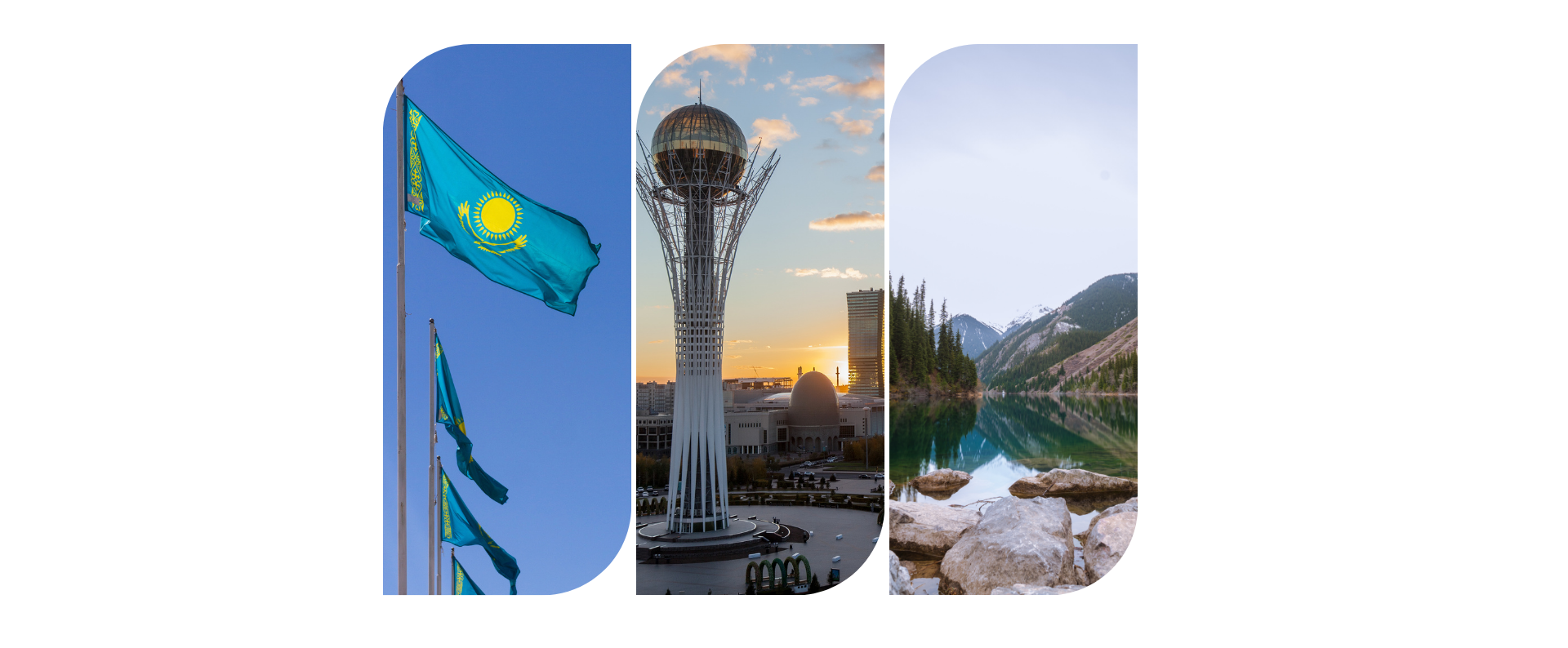
Where Tradition Meets Innovation
Kazakhstan, the largest country in Central Asia, is a land of striking contrasts—from vast steppes to towering mountains. Its modern capital, Astana, showcases futuristic architecture, while Almaty, the former capital, offers a more traditional charm with its leafy streets and cultural landmarks.
Kazakhstan is home to beautiful natural wonders like the Charyn Canyon and the scenic landscapes of the Altai Mountains. Its rich history, rooted in nomadic traditions, blends with a dynamic modern culture, making it a fascinating destination for both adventure seekers and cultural explorers.
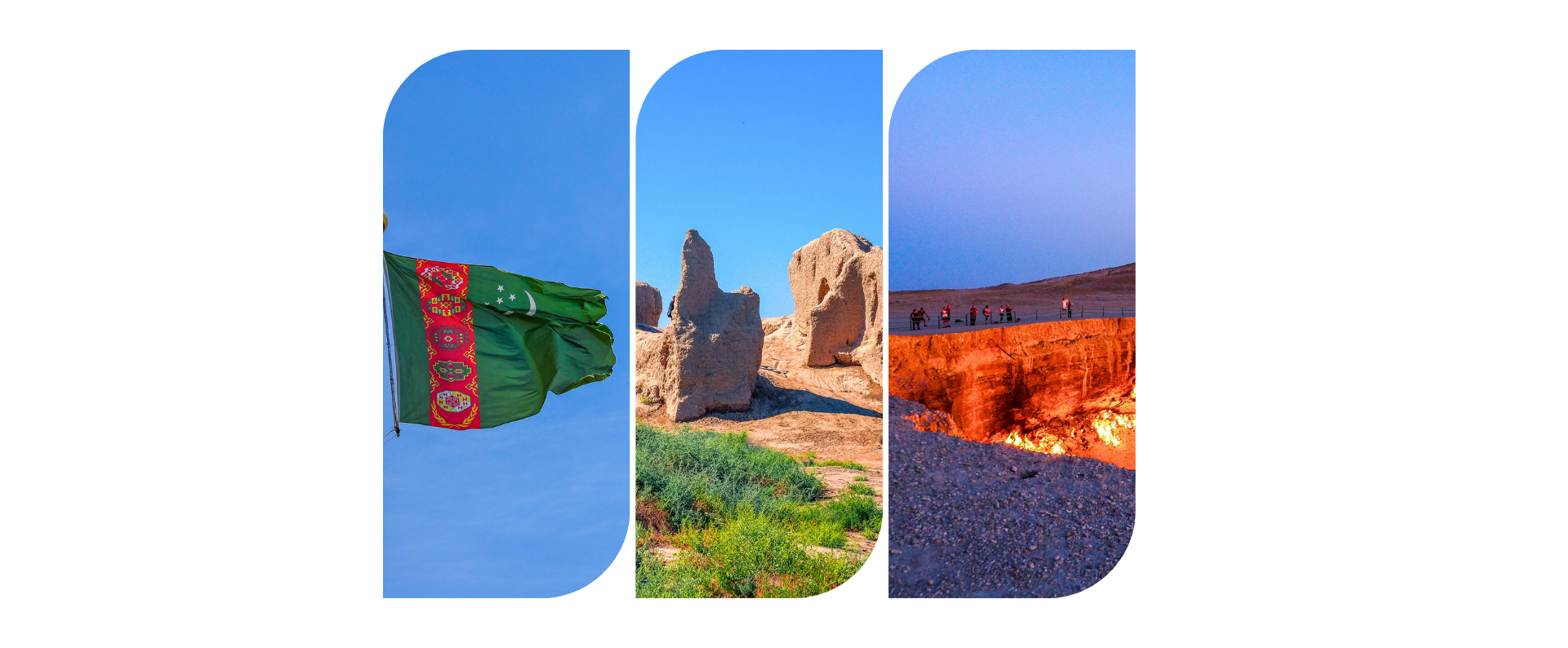
Desert Mysteries and Historical Treasures
Turkmenistan, one of the most enigmatic countries in Central Asia, is famous for its unique landscapes and ancient ruins.
The capital, Ashgabat, is known for its striking marble buildings and monuments, while historical sites like Merv and Konye-Urgench tell the story of Turkmenistan’s Silk Road heritage. The Karakum Desert and the famous Darvaza Gas Crater, also known as the "Door to Hell," are must-see natural wonders. With its rich culture, ancient history, and otherworldly landscapes, Turkmenistan offers a fascinating journey into one of the most secluded parts of the world.


